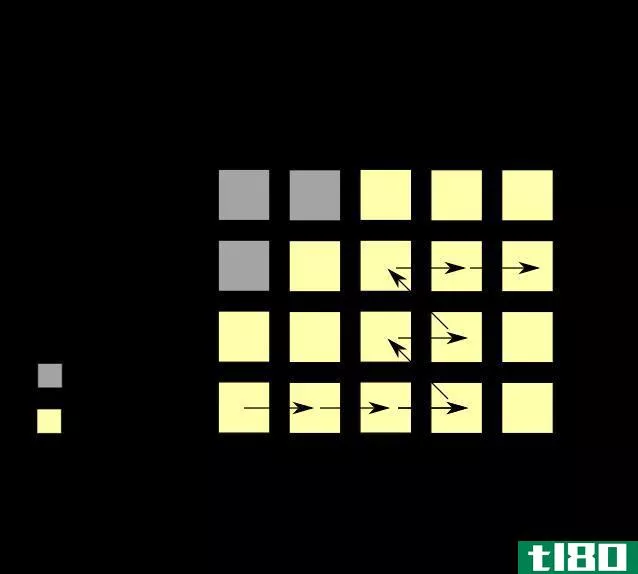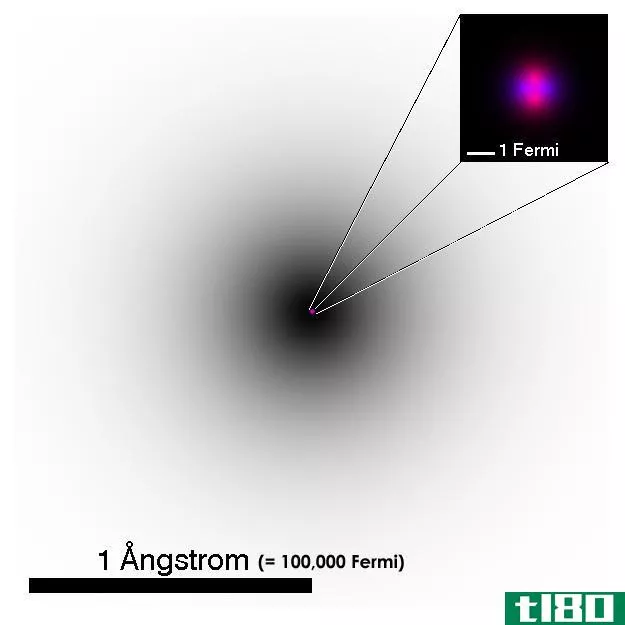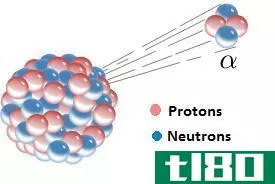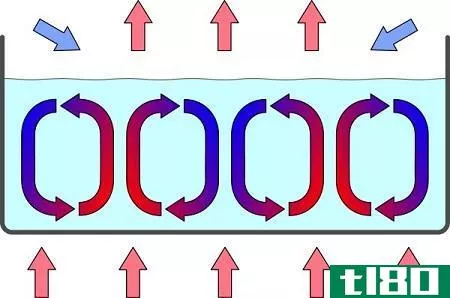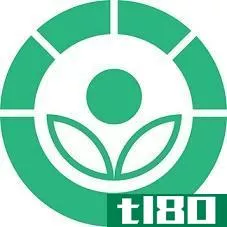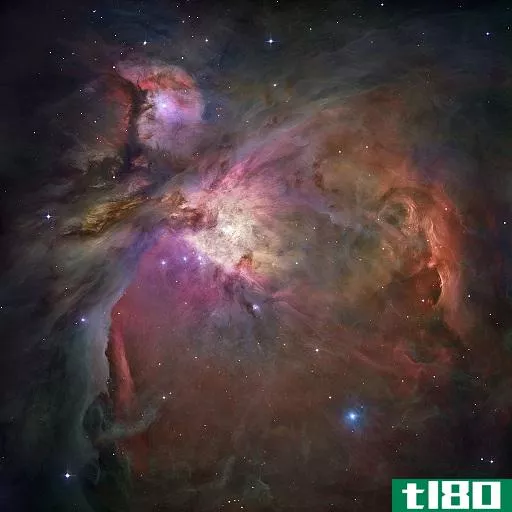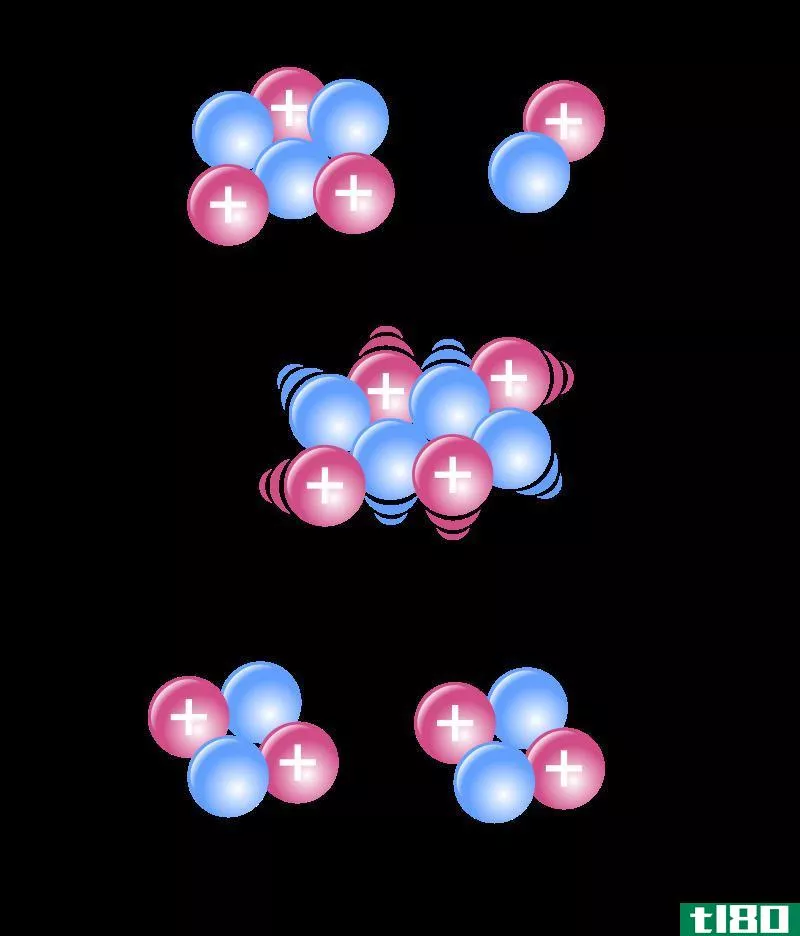什么是核辐射的用途(the uses of nuclear radiation)
核辐射有几种不同的应用,在本文中,我们将介绍核辐射的几种用途。特别是,我们将研究放射性碳年代测定和放射性同位素在医学中的应用。
放射性定年
放射性碳年代测定法是由威拉德·利比(Willard Libby)在20世纪40年代末发明的一种测定死亡有机物年龄的方法。为此,他在1960年获得了诺贝尔化学奖。这种方法利用碳-14的衰变来确定构成这种物质的有机体何时死亡。
在高层大气中,宇宙射线与各种分子相互作用,从而产生许多中子。这些中子依次与氮气原子反应,在以下反应中产生不稳定同位素碳-14:
碳-14是一种不稳定的碳同位素。它经历β-负衰变,再次产生氮-14:
上述工艺的半衰期为5730年。
大气中碳-14和碳-12的比例保持不变。大气中的碳14最终形成二氧化碳分子。由于生物不断吸收碳,因此它们体内碳-14与碳-12的比例与大气中碳-14与碳-12的比例相同。
当生物死亡时,它们停止吸收碳。它们体内的碳-14现在继续腐烂,不再补充。因此,在一个曾经存活的有机体死后,体内碳-14与碳-12的比例继续减少。
既然我们知道一个活的有机体中碳的半衰期和碳-14与碳-12的比值,如果我们能测量一具尸体中碳-14衰变的活性,我们就可以计算出这个有机体已经死亡了多长时间。这项技术可以用来发现什么时候用活的材料制成的任何东西,包括木材和织物。
放射性碳年代测定的著名案例包括Ö“冰人之子”(约5000年前埋葬的死者遗骸)、“都灵裹尸布”和死海卷轴。
放射性碳年代测定并不完美。多年来,大气中二氧化碳的组成略有变化。此外,碳年代测定可能不准确时,试图日期的东西是超过40000年。这是因为碳-14所占的比例太低,无法获得准确的活性读数。
钾-40测年
为了寻找更古老物体的年龄,可以利用钾-40到氩-40的衰变。β+衰变过程:
半衰期约为1.25×109年。因此,这比碳定年更适合确定更古老物体的年龄(例如,找出岩石形成的时间)。
例子
样品的活性Ö冰人被测量为每克0.13 Bq。假设活组织的活度约为每克0.23Bq,那么我们来看看Ö冰人子还活着。
First we will find the decay c***tant: .
Then, .
从双方的角度来看,我们有,
.
Then, .
核辐射在医学中的应用
核辐射在医学上有许多不同的用途,包括诊断和治疗。
Meta-stable tachnitium-99 is an isotope of Technitium ( ) which is produced during the decay of Molybdenum-99 ( ). The nucleus of formed is in an excited state, and it decays by emitting a ray. The decay of meta-stable technitium-99 has a half life of about 6 hours, which is much longer than half-lives of typical decays. This is ideal, since it takes some time for the body cells to absorb any material injected. The injected is taken up by cancerous cells (they do not enter healthy cells), where they undergo decay. Using a gamma camera, the position of cancerous cells could be detected.
碘-131是一种不稳定的同位素,用于破坏甲状腺中的癌细胞。
Positron-Electron Tomography (PET) scanning also makes use of nuclear radiation. Here, molecules containing atoms that undergo decay is introduced into the body. The particles are positr*** ( ) and they annihilate when they come into contact with electr*** ( ). The annihilation produces a pair of phot***, which can then be detected.
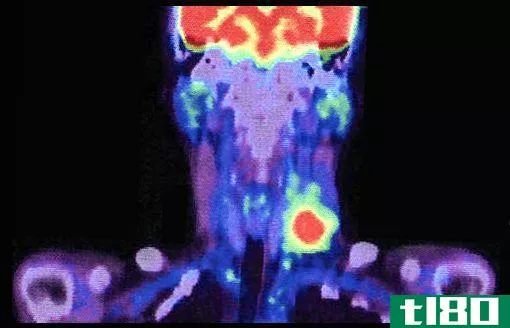
One of the Uses of Nuclear Radiation – A PET Scan
References:
Angelo Jr., J. A. (2004). Nuclear Technology. Westport: Greenwood Press.
Image Courtesy:
PET Scan Image originally by Akira Kouchiyama, [CC BY-SA 3.0]
- 发表于 2021-06-27 03:12
- 阅读 ( 74 )
- 分类:科学
你可能感兴趣的文章
中子俘获(neutron capture)和吸收(absorption)的区别
...子吸收(neutron absorption)? Neutron absorption is a technique used in nuclear reactors in which an atom completely absorbs a neutron to form a compound nucleus. It is the most important type of nuclear reaction we use in nuclear reactors. Here, the mode of decay of the newly formed atomic nucle...
- 发布于 2020-10-05 00:11
- 阅读 ( 289 )
钍(thorium)和铀(uranium)的区别
...d to Uranium, Thorium is a greater energy source. It is estimated that the nuclear energy available in Thorium is greater than the energy that can be obtained from oil, coal and Uranium. The main reason for not developing many Thorium nuclear reactors is that it requires a large capital investme...
- 发布于 2020-10-23 19:30
- 阅读 ( 258 )
wi-fi会对新生儿有害吗?
.... Ionizing radiation is dangerous. Examples of it are ultraviolet rays and nuclear radiation. They not only heat you, but they also change the composition of the molecules that make up your body. They can modify the DNA of your cells, causing cancer. Example: Sunburns. It burns after long, unprotect...
- 发布于 2021-04-11 11:23
- 阅读 ( 201 )
什么是三种类型的核辐射(the three types of nuclear radiation)
核辐射是指不稳定核通过发射高能粒子而变得更加稳定的过程。这三种核辐射是指α、β和γ辐射。为了变得稳定,原子核可以发射α粒子(氦原子核)或β粒子(电子或正电子)。通常,这样失去一个粒子会使原子核处于...
- 发布于 2021-06-27 03:10
- 阅读 ( 261 )
α-β(alpha beta)和伽马辐射(gamma radiation)的区别
α、β和γ辐射是三种不同类型的核辐射。这三种不同类型的辐射具有不同的性质。这里,我们讨论α,β和γ辐射之间的区别。在“什么是三种核辐射”一文中讨论了它们的基本性质和区别。 α-β和γ粒子 α辐射由α粒子组...
- 发布于 2021-06-27 03:12
- 阅读 ( 247 )
对流(convection)和辐射(radiation)的区别
...磁能进行的热传递。因此,辐射能通过真空传递热量。 什么是对流(convection)? 对流是物质通过物质的质量流进行传热的机制。为了传导热量,材料本身的一部分会移动,也就是说,材料内部有质量的传递。通常,对流发生在流...
- 发布于 2021-06-27 03:28
- 阅读 ( 94 )
辐射(radiation)和辐照(irradiation)的区别
...辐射描述了几种不同的能量传递过程。这包括以电磁波或核辐射(指α、β和γ辐射)形式传输能量。 我们可以把辐射分为几种不同的“类型”。其中,电磁辐射是指通过电磁波(即光子)传递能量,电磁波是由于带电粒子的运...
- 发布于 2021-06-27 04:17
- 阅读 ( 534 )
电离的(ionizing)和非电离辐射(nonionizing radiation)的区别
...中,高能紫外线、X射线和伽马射线被认为是电离的。 就核辐射而言,α和β粒子都具有电离能力。其中,α粒子的电离能力更强。然而,α粒子的射程较小,穿透能力较低。其他类型的粒子有大量的能量,也可以给电子足够的能...
- 发布于 2021-06-27 07:26
- 阅读 ( 247 )
核反应(nuclear reaction)和化学反应(chemical reaction)的区别
核反应的主要区别(main difference nuclear reaction) vs. 化学反应(chemical reaction) 核反应和化学反应是两种类型的反应,它们根据元素参与反应的方式而有本质的区别。化学主要研究涉及电子交换和共享的反应。然而,这些反应...
- 发布于 2021-06-27 09:18
- 阅读 ( 532 )
核裂变(nuclear fission)和聚变(fusion)的区别
核裂变的主要区别(main difference nuclear fission) vs. 聚变(fusion) 核聚变和核裂变是发生在原子核内的化学反应。这些反应释放出非常高的能量。在这两个反应中,原子都发生了变化,最终产物与初始反应物完全不同。核聚变...
- 发布于 2021-06-29 09:35
- 阅读 ( 875 )
